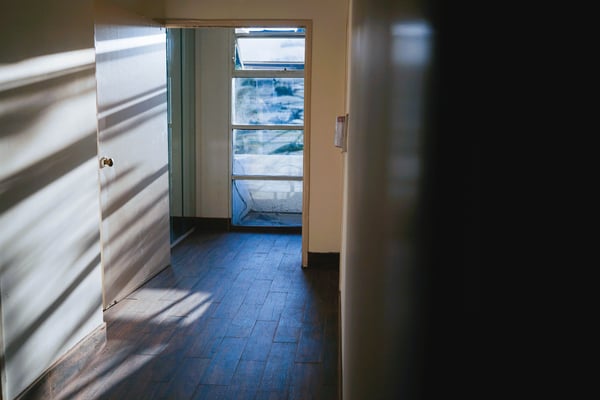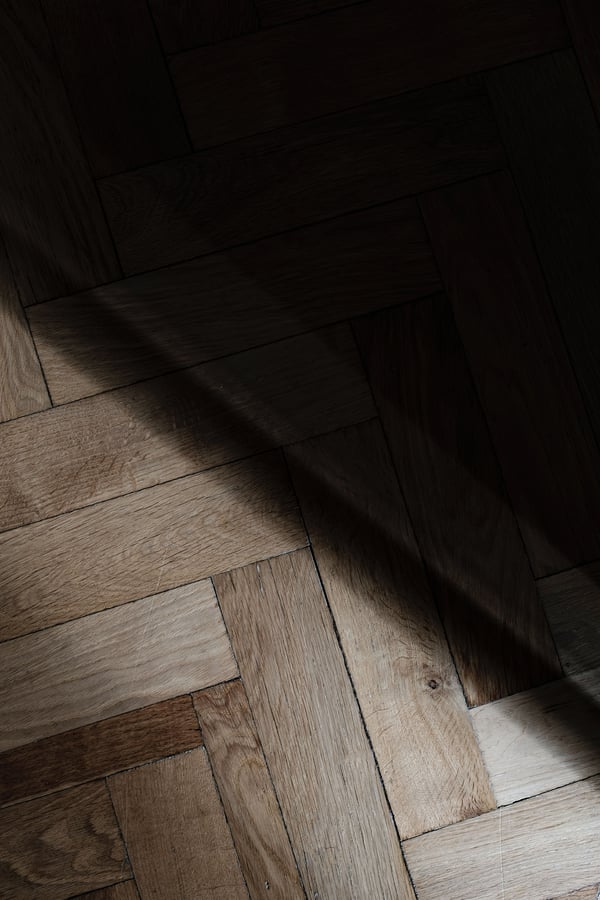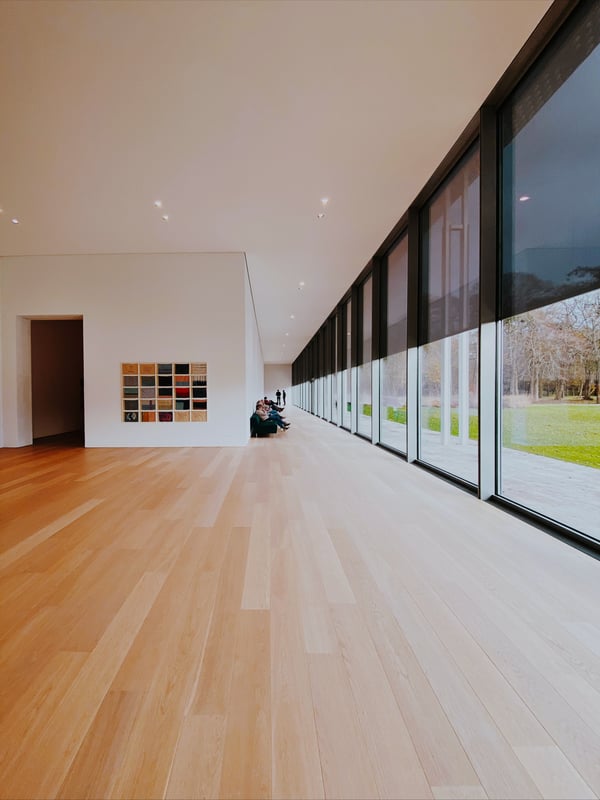Hardwood floors are one of the greatest assets in your home. The typical cost of hardwood material alone is $3 to $6 per square foot. This flooring adds value to your home both in beauty and in property valuation. To maintain this high level of worth, it’s crucial that you restore your wood often with a little TLC.
But keeping your wood floors looking like new can be challenging and costly. According to Home Advisor, it costs on average $970-$1250 to professionally refinish 300 square feet of hardwood floors. Because of this high price, many people opt to restore their hardwood floors themselves. However, improper sanding and sealing of hardwood can result in ruined floors for the duration of the flooring’s life. In this way, it’s crucial to understand how to restore your floors without damage.
What Are The Options For Hardwood Restoration?
It’s almost never recommended to completely rip up and redo hardwood floors due to the exorbitant price. Moreover, most hardwood floors can last for several decades if treated with the appropriate love and care. Thus, sanding, refinishing, and recoating your current floors can help update the look and renew its natural vigor.
There are two primary options for restoring your hardwood floors: recoating and refinishing.
Recoating
Recoating applies a new sealer on the surface of wood. You will lightly sand the top layer of wood with gentle sand paper. This takes off the old coating without buffing down the wood. You can then add a fresh, shining coating on top of the wood.
This is the best option if you want to update the look and shine of your floors when there aren’t any marks or damages in the floor. Recoating is a less expensive process, but it needs to be done more often than refinishing.
Recoating is also more common if your floors aren’t sturdy enough for a refinishing. For example:
- The gaps between the floor planks are wide
- The nails holding down the floor are visible
- The floor is laminate or has a laminate coating
Note there’s also a new process called chemical etching, which doesn’t require sanding. This is best for laminate floors. Contact us to learn more about chemical etching for your laminate wood.

Refinishing
Refinishing sands down layers of the floor to expose a new wood grain surface. You’ll sand down the floors with a power buffer and then apply a fresh coat of finish. This is also the process you’ll use if you want to stain the floors before refinishing.
Refinishing is necessary if your floor has scratches, marks, furniture indentations, lack of shine, or stains. It’s common to refinish high-traffic areas, where the dirt gets ground into the wood more easily. The sanding process can help remove this dirt, while refinishing renews shine and adds a protective layer. Refinishing lasts longer than recoating and can add over 20 years of life to your floor.
It’s important to note that sanding should not be a common practice. Your hardwood floors can only take a few rounds of sanding before it starts to wear away at the wood’s natural surface. In this way, sanding should be used to restore floors with deep scratches or that haven’t been finished in several years.
Removing and Refinishing
In some cases, you’ll find hardwood floors hidden under vinyl or carpet in your home. In decades past, people often tried to “modernize” their home with vinyl and carpet. Now that the natural look of hardwood is back in fashion, you can proudly display the subfloor underneath your ‘90s blue carpet or your ‘70s black and white vinyl tile. In this case, you’ll need to first rip up the old floors, remove any debris, and clean the area with a gentle hardwood cleaner. From there, you can begin the refinishing process.
DIY How To Refinish Floors
Recoating and refinishing have the same general process. You’ll use different sanding tools and different applicators (coating versus sealant).
When you’re restoring your floors, you need to take extra time and care so as not to damage the hardwood:
- Don’t over-sand, which can take off too much of the natural wood’s grain.
- Don’t sand in an unusual pattern. This can create inconsistent scratches and dents.
- Be sure to fill in or sand down all cracks of the hardwood before adding sealant. If not, the sealant will settle in crevices and the dents will be more pronounced.
- Be sure to take off all the old coating or finish before adding a new sealer. Otherwise, the new coat won’t properly adhere to the floor and can cause staining, marks, and uneven layering.

What’s the process for restoring your wood floors yourself?
What You’ll Need
-
Prep the floor.
Remove all furniture. Use painter’s tape around baseboards and molding.
Clean your hardwood floors. This cleaning helps to remove all dirt and debris to ensure an even, consistent sanding process. Mop with a wood cleaning solution and cool water. You can also clean with 10 parts water and 1 part white vinegar for a natural solution. Wipe with a terry cloth mop or towel. Learn more about caring for wood floors here.
Sanding creates a lot of dust, so you’ll want to close doors to other rooms and cover exposed cabinets, windows, ducts, outlets, and light fixtures. You can use plastic bags, painter’s tape, or tarp. You’ll also want good ventilation to remove the dust, so keep the doors to the outside open (if applicable) and use a dust collector. Be sure to wear a dust mask while working as well.

-
Sand the perimeter.
Start by hand-sanding the perimeter of the room with sandpaper or an edge sander. This ensures you do not damage the walls or crevices with a large sander. Do not use a sanding block. If you are recoating, use 180-grit sandpaper. For ultra fine sanding, you can use 360-grit. If you are refinishing, use 60-grit or 80-grit sandpaper.
Rub the grain in the direction of the wood 4 to 6 inches out from the baseboard. Move in a circular motion around the edges. Overlap the other areas so the surface will blend evenly. This will dull the look of the finish and begin to form a powder. The powder is actually the old finish being removed.
-
Sand the floor.
The first round of sanding will remove the coating and expose a new grain of wood. If you are recoating, you may want to sand by hand with 120-grit sandpaper. If you are refinishing, you’ll want to use a sanding buffer. We prefer the Onfloor Hardwood Sander because it has a built in vacuum system that can help remove dust as you work.
As you sand, the old finish will turn to powder. This change in color and release of powder can help you see the area you’ve already covered.
- Start at one end of the room and work in a straight path across the room.
- Move in the same direction as the boards. Let the sander steer you along the groove of the wood.
- Always keep the sander in motion to prevent dents and grooves in wood.
- Overlap each course by 6 inches to prevent any sanding edge lines.
- Change the sandpaper as it wears out (after approximately 100 square feet). This ensures a strong sanding without damaging the floor. (It’s similar to how you’d prefer to shave with a sharp blade rather than a dull one.)
- Empty vacuum bags regularly, if your sander is also a dust collecting system.
-
Vacuum up the powder.
After you’ve sanded the entire floor, let rest for 15 minutes. Then, vacuum up the powder. This will help grab anything that the sander’s dust collecting system didn’t gather. This helps keep the area clean for additional sanding and finishing.
-
Do additional sanding coats.
If you are recoating, you won’t need to sand anymore. If you are refinishing, you may need to do additional sanding rounds to further remove blemishes and scratches. For the second and third rounds of sanding, you may want to hand-sand with a 60-grit sandpaper. Start at the opposite end of the room and follow the same process as above, but by hand. Be careful to avoid over-sanding.
-
Clean up.
After any additional sanding, be sure you fully clean all the particles and debris from the floor. If you don’t, you will trap these particles underneath the coating for an uneven, bubbling coated surface. Use an industrial-grade vacuum with a soft-bristle attachment to ensure you don’t scratch the newly sanded floors. If you don’t have a soft bristle, you can put painters tape on your vacuum’s attachment to avoid scraping the floors.
Vacuum everything, including the cabinets and walls. You don’t want dust sitting in the room and getting your family sick. After vacuuming, wipe down the room with a damp cloth. Vacuum dry again.
-
Staining.
If you plan on staining your hardwood floors, this is the point that you would apply the staining solution. Follow the instructions on your stain. Staining can be a challenge for DIYers, so we often recommend calling in a professional to ensure the staining doesn’t ruin your wood. Contact us to discuss this process further.
-
Choose your sealant.
If you’re recoating, talk to an Onfloor specialist about choosing the right coating and color for your wood.
If you are resealing, polyurethane is the most common type of sealant. It resists most types of wear and tear and environmental damage. You can choose between oil-based and water-based sealer.
Oil-based takes 24 hours to dry and is inexpensive, but it will also gain an amber hue overtime. Oil-based sealers make easier to fix your mistakes as you work, so they’re common for the DIYer.
Water-based sealers dry faster, are more durable, and remain clear over-time. However, they’re more expensive and are harder to apply and keep consistent for beginning DIYers.

-
Seal your floors.
Start with the perimeter. This is called a “cut in.” Apply sealant using a paintbrush 3” around the outside of the room along the baseboards.
It’s important that you move quickly from sealing the perimeter to sealing the rest of the room, because you will have lap marks if the sealant starts to dry. It usually takes 10 minutes to dry, so you may want some friends to help you out.
Seal your floors in line with the grain. The movement will be similar to that of the sanding process. Spread as much as you can in 10 minutes and roll over with a long-handed roller. Use a lambs-wool applicator or other soft applicator to apply sealant. Overlap each pass on the floor by at least one inch. Work quickly to keep a wet edge.
Move from the outside of the room towards the center. Move from the furthest point towards the exit, so you never walk on any of the sealer.
-
Finish the process.
Allow the sealant to dry for 24 hours. Buff over the area with a gentle buffer if the floors need to be leveled further. Vacuum up any residue. If applicable, apply a second sealant coat and allow it to dry for 24 hours before buffing clean.
The Bottom Line
After a few days of sanding and refinishing, your floors will look like new! Be sure to take preventative measures to avoid further damages and marks. A few care tips can extend the life of your floor for decades to come.
Are you looking to restore your hardwood floors? Contact Onfloor and we’ll pick the perfect tools you’ll need to get the job done easily, efficiently, and beautifully!

9 comments